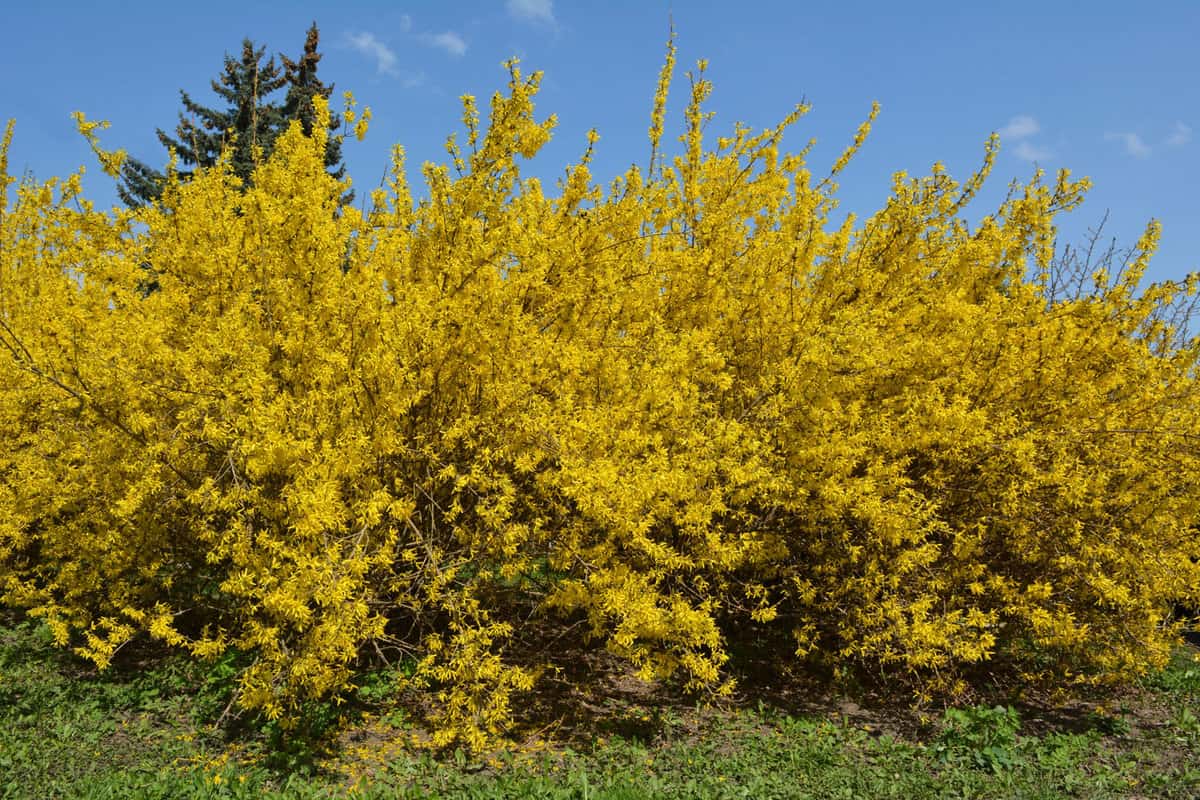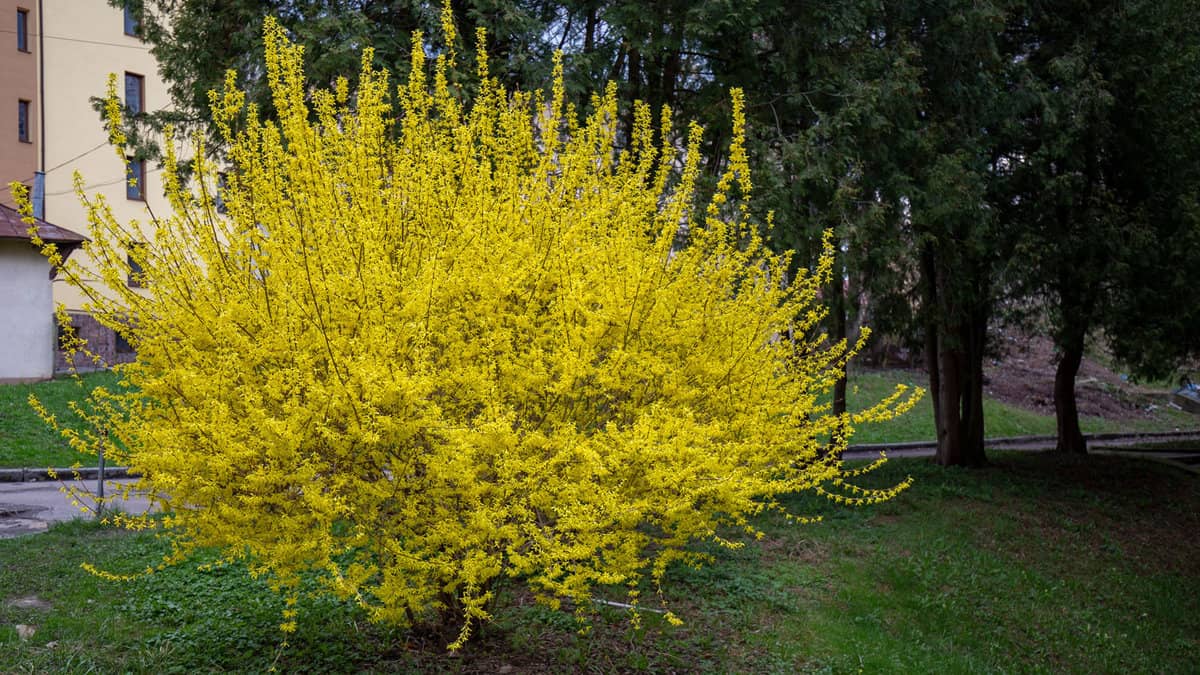Forsythia shrubs are a popular choice for many gardeners due to their vibrant yellow flowers and easy-to-grow nature.
As you plan your garden, you may be wondering if forsythia have invasive roots and if they could cause potential issues for nearby plants, structures, or utilities.

Read on below to know more about the Forsythia's root system.
Understanding Forsythia: A Brief Overview
Forsythia is a group of deciduous shrubs known for their vibrant yellow flowers that bloom in early spring.
These plants are not native in the US but rather in Europe and East Asia. However, they are popular in many gardens due to their adaptability and low maintenance requirements.
Forsythia is predominantly used in groupings or as screen plants in the landscape.
Are Forsythia Roots Invasive?
Forsythia, while celebrated for its vibrant yellow spring blooms, can become an invasive presence in gardens and landscapes.
This ornamental shrub's aggressive growth is characterized by its tendency to send out suckers from its roots and the base, allowing it to colonize large areas over time.

Left unchecked, forsythia can crowd out other plant species, especially when it thrives in ideal growing conditions.
Moreover, the extensive root system of forsythia can pose challenges when planted near structures like sidewalks, driveways, or building foundations.
These robust roots can cause disruptions or damage, particularly if the structures have pre-existing vulnerabilities.
For homeowners and gardeners, it's crucial to monitor and manage the spread of this shrub to prevent it from dominating the landscape.
Are Forsythia Deep Rooted?
Forsythia roots are not exceptionally deep, especially when compared to trees or some other shrubs.
Instead, they have a more spreading root system that extends outward from the base of the plant.
This expansive, lateral root system allows the shrub to establish itself firmly in the ground and absorb nutrients and water effectively.
While forsythia roots may not plunge deeply into the soil, their extensive spread can still anchor the plant securely and support its growth.
Can You Plant Forsythia Next to a House?
It is not recommended to plant forsythia too near house. There are several considerations to keep in mind.
Forsythia bushes can grow quite large unless regularly pruned. They can reach heights of 8-10 feet and spread just as wide, depending on the variety.
When planting near a house, ensure that you provide enough space for the mature size of the shrub or be prepared to prune it regularly to keep it in check.
While forsythia roots are not exceptionally deep, they are expansive.
Although they're less likely to cause foundational damage compared to deep-rooted trees, it's still a good idea to plant them a safe distance away from the foundation, especially if there are any vulnerabilities.
If allowed to grow too tall, fallen leaves and flowers from forsythia can clog gutters. Regular maintenance and monitoring can prevent this.
Positioning Forsythia near a house means you'll need to be proactive with pruning to ensure the shrub doesn't obstruct windows or walkways.
Managing Invasive Forsythia Roots
To prevent Forsythia roots from becoming invasive, it's essential to use proper planting and pruning techniques.
Proper Planting Techniques
Select a planting site with sufficient space for the shrub to grow. This will help reduce the chances of root growth interfering with other plants or structures.
While preparing the planting hole, ensure that it is at least twice as wide as the root ball.
Plant your Forsythia at the same depth as it was in the container or slightly higher to avoid root suffocation and rot.
Lastly, when establishing the plant, water it regularly, but take care not to overwater, as this may encourage invasive root growth.
Regular Pruning
Pruning is another essential aspect of managing invasive Forsythia roots.
Regularly pruning your Forsythia shrub will not only maintain its size and shape but also help control root growth.
An option for pruning overgrown Forsythia is to remove a third of the oldest branches shortly after flowering in the first year, followed by half in the second year and the remainder in the third year.
Cut the branches as close to the ground as possible to encourage new growth to emerge from the base, which will prevent excessive root expansion.
By adopting a consistent pruning schedule, you can keep your Forsythia's root system in check and maintain a healthy, attractive shrub in your landscape.
Proper Root Management Is Key To Growing Forsythia Near Your Home
In conclusion, Forthysia's extensive outward spread can categorize them as invasive, presenting challenges in containment and removal.
This tenacious growth habit, however, doesn't necessarily spell disaster for homeowners and gardeners.
With attentive care and proactive management, forsythia can coexist near homes without compromising structural integrity or overshadowing neighboring plants.
The key lies in understanding its nature and committing to regular maintenance, ensuring the plant becomes a harmonious rather than a disruptive element in the garden.
We hope we kept you informed about the Forsythia's root management. To learn more about the root systems of other plants, read here:

